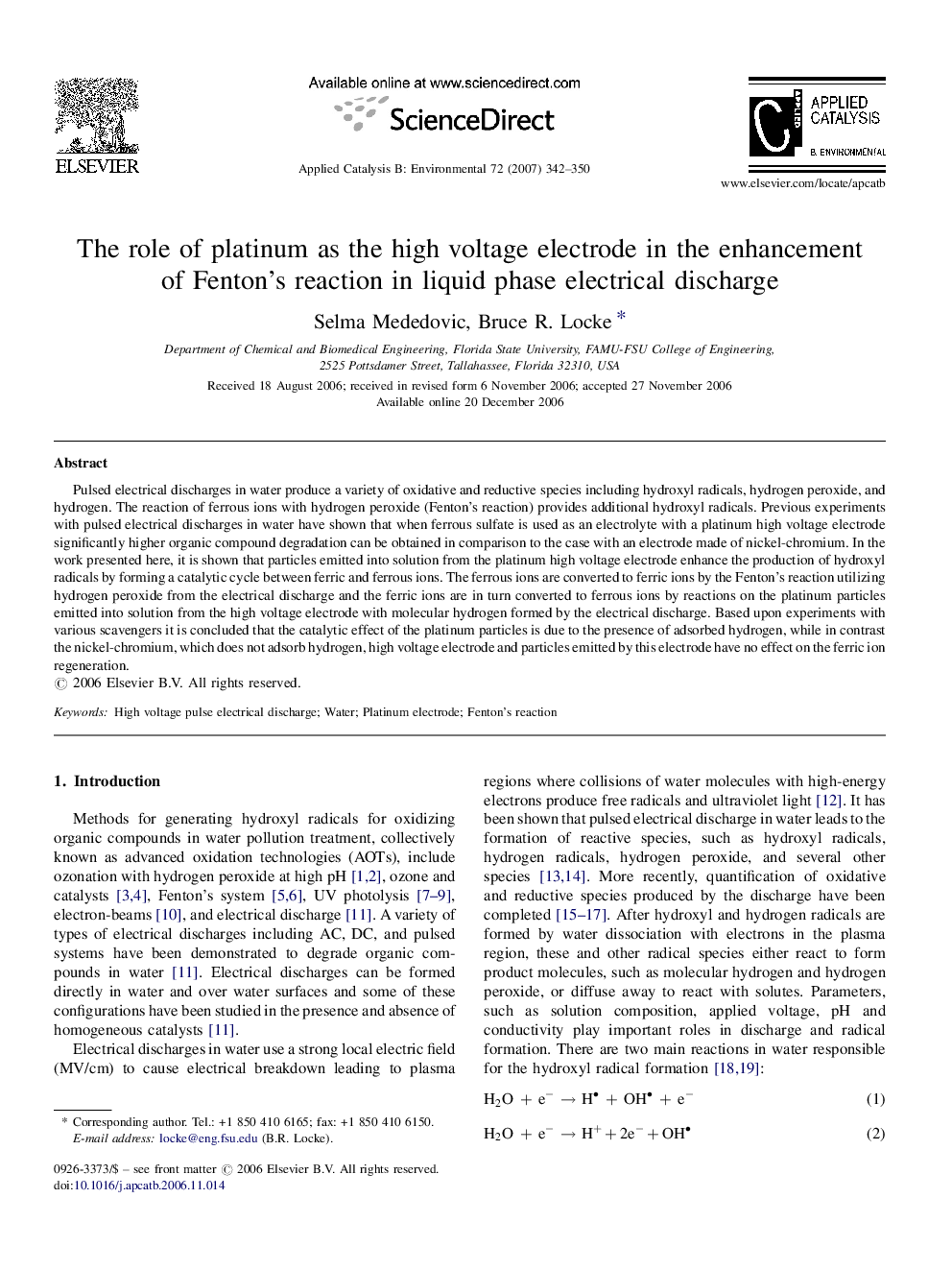| Article ID | Journal | Published Year | Pages | File Type |
|---|---|---|---|---|
| 48724 | Applied Catalysis B: Environmental | 2007 | 9 Pages |
Pulsed electrical discharges in water produce a variety of oxidative and reductive species including hydroxyl radicals, hydrogen peroxide, and hydrogen. The reaction of ferrous ions with hydrogen peroxide (Fenton's reaction) provides additional hydroxyl radicals. Previous experiments with pulsed electrical discharges in water have shown that when ferrous sulfate is used as an electrolyte with a platinum high voltage electrode significantly higher organic compound degradation can be obtained in comparison to the case with an electrode made of nickel-chromium. In the work presented here, it is shown that particles emitted into solution from the platinum high voltage electrode enhance the production of hydroxyl radicals by forming a catalytic cycle between ferric and ferrous ions. The ferrous ions are converted to ferric ions by the Fenton's reaction utilizing hydrogen peroxide from the electrical discharge and the ferric ions are in turn converted to ferrous ions by reactions on the platinum particles emitted into solution from the high voltage electrode with molecular hydrogen formed by the electrical discharge. Based upon experiments with various scavengers it is concluded that the catalytic effect of the platinum particles is due to the presence of adsorbed hydrogen, while in contrast the nickel-chromium, which does not adsorb hydrogen, high voltage electrode and particles emitted by this electrode have no effect on the ferric ion regeneration.
